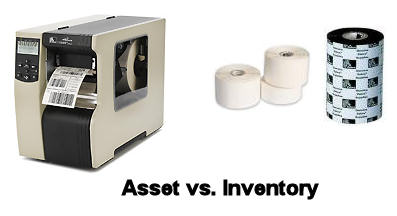Is your company considering implementing an Asset Management System? Or maybe you are thinking about an Inventory Management System? What’s the difference, you ask?
Well, Merriam-Webster defines an asset as an owned item of value. In contrast, it defines inventory as the quantity of materials on hand. Why does this difference matter? If your company is one of the many that is investigating implementing a tracking system, the difference is significant because one type of system may be better for your company than the other.
As an example let’s take the shipping department of a manufacturer. Some of the assets you can find here are fork trucks, tow motors, computers, printers, tape machines, scales, personnel, and loading docks. All of these items, even the personnel, are considered assets.
The manufacturer purchases the equipment and uses it over time, performing preventative maintenance (PM), calibration and certification as needed. Some equipment, like the computers and printers may be maintained by your internal IT staff. Other equipment, like fork trucks and scales may be maintained by vendors, sometimes under contract. An Asset Management System will help keep track of all of the various assets. Specifically, it tracks, among other things, when and from whom the assets were purchased, where they are located, when PM was done and when it is due, when a service contract is due for renewal. An Asset Management System can also help manage the employees who work in this area, for example, by keeping track of who has been trained on which equipment.
This same shipping department will also have inventory such as rolls of tape for the tape machine, labels for the printer, and fuel for the fork trucks. These are materials that are not company assets, but rather are consumed in the everyday operation of the business.
An Inventory Management System helps keep you from running out of any of the material you need to run your business by tracking your company’s inventory levels. You can also tie an Inventory Management System to other systems For example, you can tie it to your Purchasing System to automatically generate orders. An Inventory Management System can even help you meet regulatory requirements by tracking the genealogy of material used in the manufacture of a product and the record any tests performed on this material.
So if your company is thinking about implementing an Asset Management or Inventory Management System, the first thing to do is write down what you want it to do. Then, call L-Tron Corporation at (800) 830-9523 and we will help you determine whether an Asset Management System or an Inventory Management System (or maybe both) is best for accomplishing your company’s goals. We will help design the solution that’s right for you!
